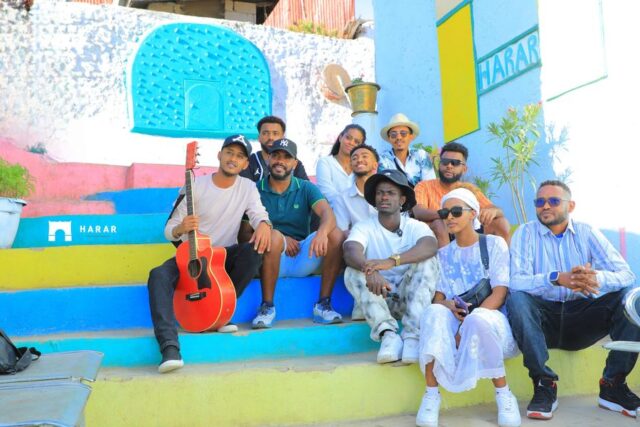The ancient (and very colourful) walled city of Harar Founded in 940 A.D., the ancient walled city of Harar is a maze of alleyways, mosques, markets and vibrant, colour-coded buildings. The citizens of the city are uniquely diverse, with Muslim, Ethiopian Orthodox and Catholics all residing in a small space. Their ability to peacefully coexist saw it awarded the City of Peace Prize by UNESCO in 2003.

Street maze, traditional Harari house, defensive wall, and hyenas
Street maze:
Most of Harar′s streets are less colorful and quieter than its market streets. But wandering and getting lost in the maze formed by these small, sometimes very narrow, streets and alleys is another one of the pleasures of visiting Harar.
Dense house packing in the old city: there is no apparent structure or main street.
Colorful and highly decorated interior of the main room. (I spent several nights in this house. The other rooms that I have seen are much more sober. The main room is often used in the afternoon by women to drink coffee and chat among friends.)

Defensive wall:
This 3.4km-long wall fully encloses Jugal (the old city of Harar) and defines the actual extent of Harar until the 20th century. It was built in the mid-16th century to defend the city against the threats of Christian forces from the Ethiopian highlands and increasing migration of the Oromo people. Although it may have been repaired many times, its shape and style have remained mostly intact. One of the main changes has been the addition of a new gate under the reign of Haile Selassie, the Harar gate, large enough to allow cars to enter the old city. Fortunately, still today, very few parts of the old city are accessible by cars.


